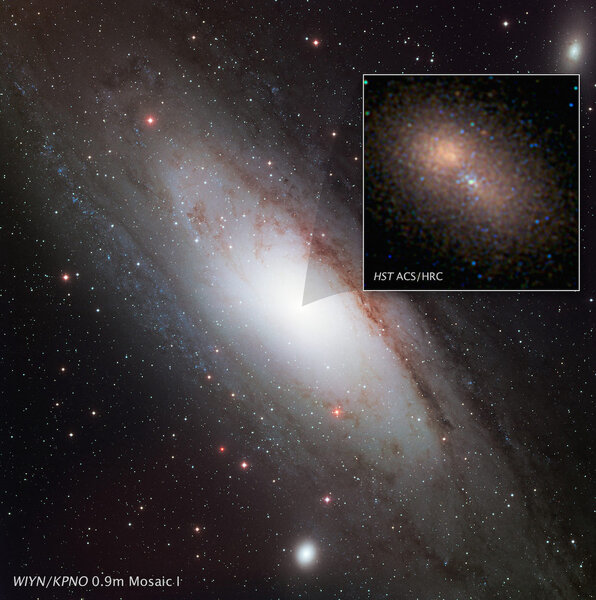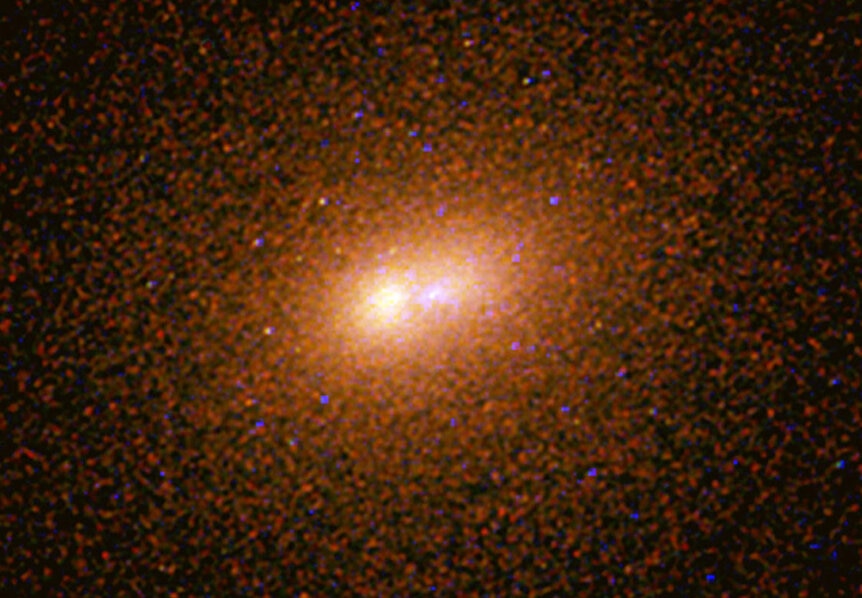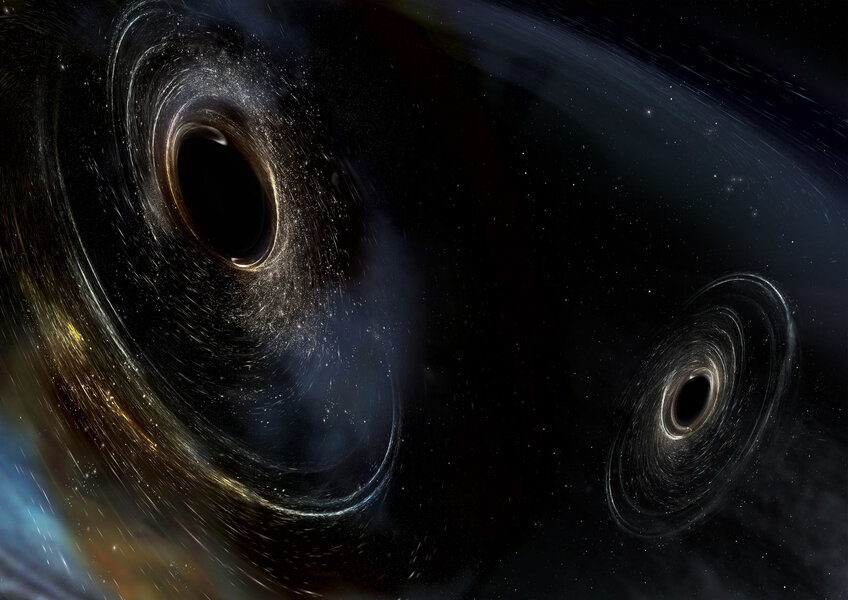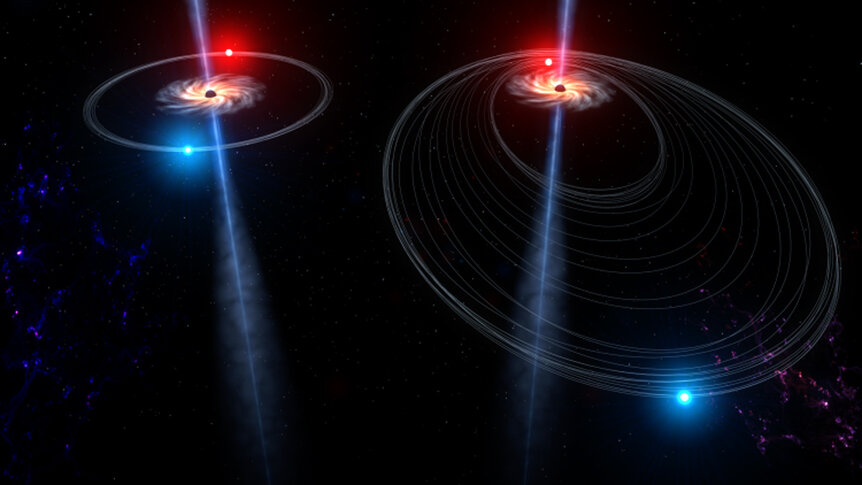Create a free profile to get unlimited access to exclusive videos, sweepstakes, and more!
A colossal collision between supermassive black holes may explain Andromeda’s weird core
Andromeda Galaxy's central black hole was kicked hard.
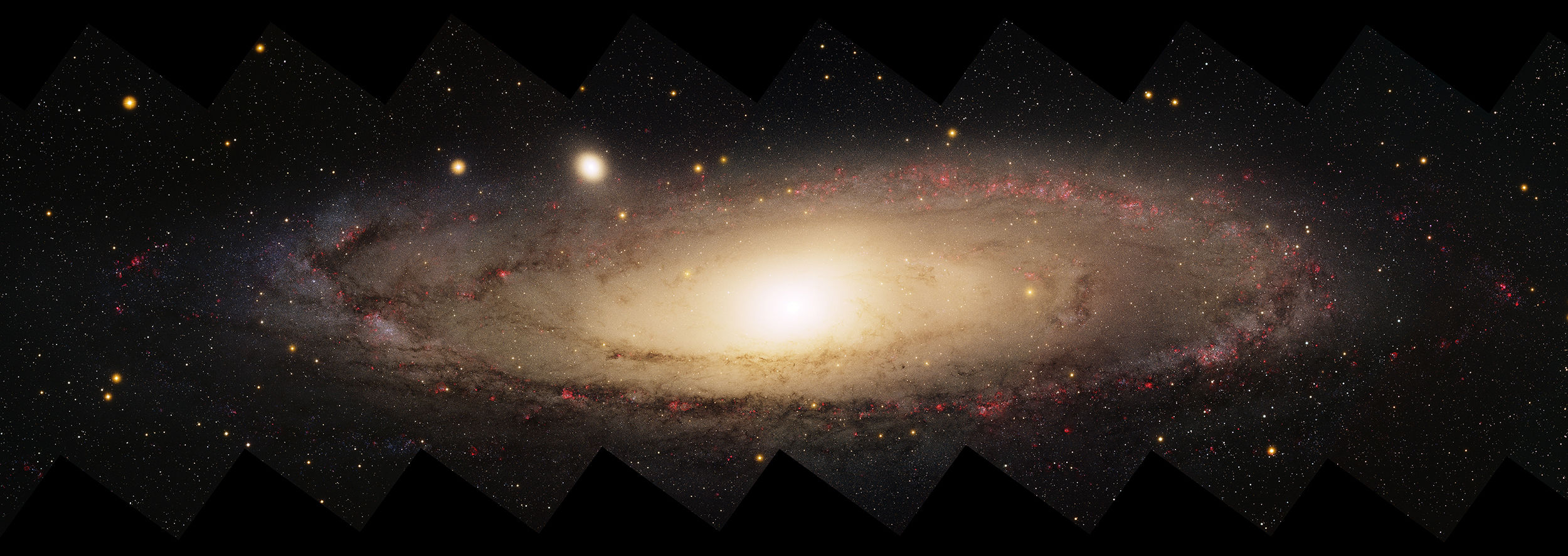
Something really weird is going on in our galactic neighbor’s core.
The Andromeda Galaxy, also called M31, is a huge spiral galaxy fairly close in size and mass to our own Milky Way. Like the Milky Way it also has a central bulge of stars, and a supermassive black hole in its very core. In 1993, though, astronomers got a shock when Hubble images revealed not one but two blobs of light surrounding the core.
One of these two blobs was blue, the other redder. The observation history is a bit complex, but by 2012 it was clear that the blue blob was a cluster of hot, young stars surrounding the central supermassive black hole, and apparently about 100 – 200 million years old. The other feature was a lopsided elliptical disk of redder stars surrounding the blue cluster, brighter on one side than the other.
The Milky Way’s supermassive black hole is also surrounded by a cluster of young, blue stars, so this might be a common feature in galaxies. In the case of Andromeda, the blue cluster is about 3 light years across, and the red star disk about twice that. This is not seen in our own galaxy, which has a simpler nuclear structure, so something must have happened in the core of Andromeda to not only create that outer disk but to also make it lopsided, so much brighter on one side than the other.
In a new paper, a pair of astronomers thinks they may have a possible solution. It involves the black hole in the center, and a cosmic crash of ridiculous proportion.
The supermassive black hole in Andromeda is very roughly 100 million times the mass of the Sun (at least 25 times more massive than the one in the Milky Way). It probably wasn’t born huge, though: It likely grew from a smaller size by, on the odd occasion and among other things, eating another massive black hole. That happens when another (generally smaller) galaxy collides and merges with Andromeda. Over time that black hole passes stars and gives them energy by flinging them away. That steals energy away from the black hole, so it drops closer and closer to the center. Eventually it goes into a slowly decaying spiral orbit around Andromeda’s original supermassive black hole… and then one day, kablam. They merge.
When that happens they emit an extremely powerful burst of gravitational waves. If one black hole is a lot smaller than the other, that blast can be focused more in one direction than another, and it acts — and I still have a hard time comprehending the scale of this — like a rocket motor, pushing on the new, bigger black hole, giving it a helluva kick. It can be enough to propel the black hole out the galaxy entirely!
But if it’s not quite that fast the black hole will fly off but essentially oscillate back and forth in the galactic nucleus, plunging through it, slowing, then dropping back down. Eventually, again by interacting with stars, it slows down and finds its way back to the exact center of the galaxy.
This is what the new work proposes explains the weird ring around Andromeda’s black hole. Here’s the timeline:
A billion or more years ago, a galaxy merges with Andromeda. The black hole drops down, and eventually merges with the bigger black hole there. Sometime before that final merger, material from the galaxy falls toward the black hole and goes into orbit around it a few light years out. Enough matter piles up to form stars, which make a circular ring around the black hole.
Then the black holes merge, and the end product flies off at high speed, perhaps 150 – 200 kilometers per second. Oof.
When that happens, the stars orbiting it get a kick as well, a sudden force that affects the shapes of their orbits. They can still stick with the black hole even as it goes flying off, but now instead of a circle the stars orbit in an elongated ellipse. As they orbit they move faster when closer to the black hole, and slower when they’re farther away. That’s why the ring we see is lopsided: One side is brighter because more stars are there, piling up at their most distant point from the black hole (called apoapsis).
The blue stars came along much later. The older, redder outer ring stars blow material off which can fall closer to the black hole, make another disk, which itself forms stars. In Andromeda these stars are younger, and the more massive brighter ones are blue. It’s possible that stars merged together in the closely packed environment, and this can also create blue stars (called blue stragglers). I’m speculating here; this is me guessing and not an official declaration.
This series of events is itself not cast into stone. It’s one possible way things wound up as we see them now. This new research does explain a lot of what we see in Andromeda, but was more of a general analysis rather than looking at specifics, just to see if the physics can work out. Apparently it can. So the astronomers plan on more detailed work to see if they can explain more precisely what happened inside our big neighbor galaxy.
As our technology gets better we are able to peer more closely into the hearts of nearby galaxies, allowing for more detailed physics to be tested. Did something like this ever happen in our own galaxy? How about others? Soon we may know.
My thanks to Ann-Marie Madigan, one of the authors on the paper, for a conversation to clear up my questions, and to Tod Lauer, one of the double nucleus discoverers, who also chatted with me about this fascinating topic. Any factual errors above are mine, not theirs.
